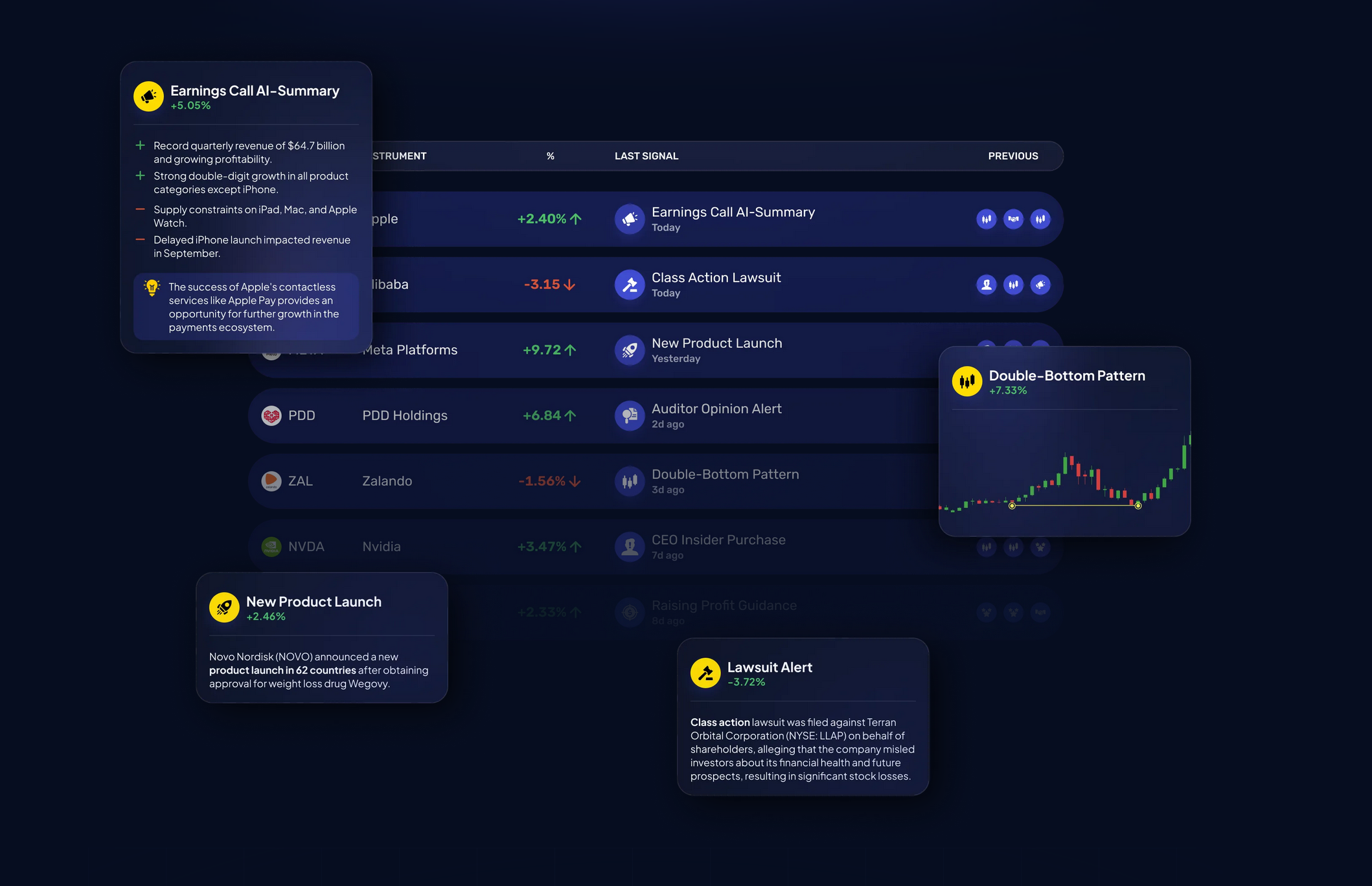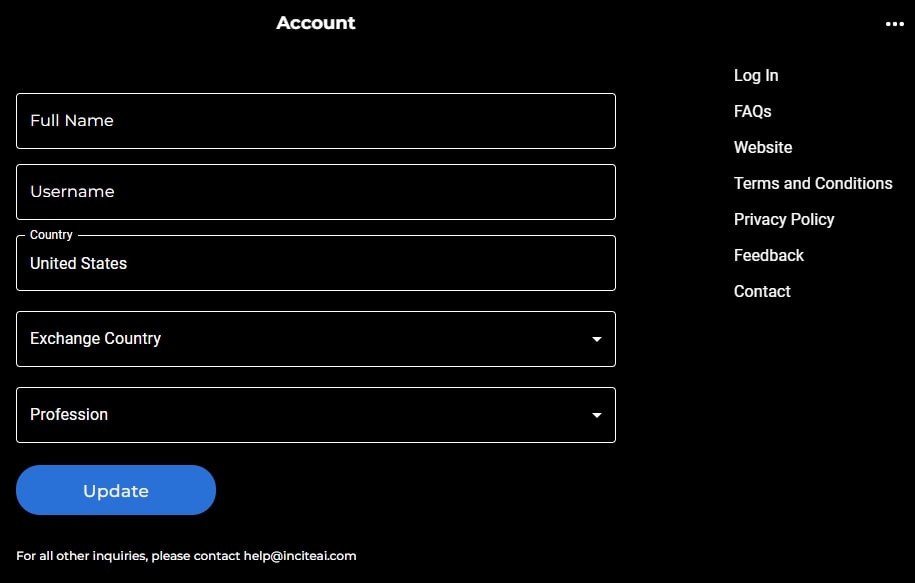Assessing the accuracy and performance of AI stocks and trading platforms is critical to make sure you're using the right tool to provide solid insights and accurate predictions. Here are the best 10 ways to assess these platforms.
1. Backtesting Results
What to look for: Ensure that the platform permits users to run back-tests in order to see how accurate their predictions were based on historical data.
What is important: By comparison of the AI model's predictions with actual historical outcomes Backtesting confirms its accuracy.
TIP: Find platforms that let you alter the parameters used for backtesting (e.g., time periods and assets classes).
2. Real-time Performance Monitoring
What to look out for What to look for: Examine how the platform performs in market conditions that are in real-time.
Why it's Important The real-time results are more reliable indicators of the effectiveness of a platform than only the backtesting of the past.
Tip : You can use an account demo, or a trial version of the software to keep track of the real-time movement and compare it to your forecasts.
3. Prediction Error Metrics
What to look for Measurements such as Mean Absolute Error or Root Mean Squared Error or R-squared to gauge the accuracy of predictions.
What is the significance of these metrics provide a quantitative measure of how close the forecasts are the actual results.
Platforms that share metrics openly tend to be more transparent.
4. Winning Rate and Success Ratio
What to look out for: Examine the winning rate of the platform, which is the percent of predictions that are right. Also check its success ratio (the profit of trading using predictions).
Why it matters : A high success ratio and win rate indicates a better predictive accuracy, and consequently, a greater chance of profitability.
It is crucial to be wary of websites that make untrue claims (e.g. 90% %+),) in the sense that there is no way to guarantee that a system will work.
5. Benchmarking Against Market Indices
What to Watch for: Check the performance and predictions of the platform against important market indices.
Why It Matters This will help determine whether the platform outperforms or underperforms the broader market.
Look for outperformance that is consistent over time, and not just in the short-term.
6. The sameness across Market Conditions
What to Look For Check how the platform performs under various markets (bull markets or bear markets, high volatility).
What is important The platform that is robust must be able to perform regardless of market conditions, not just when the market is in good shape.
Test the platform's predictions in volatile markets or during market downturns.
7. Transparency in Methodology
What to Look for: Learn about the AI algorithms and models that are used (e.g. neural networks and reinforcement-learning).
Transparency of methodology lets you evaluate the scientific rigor and reliability of the platform.
TIP: Beware of platforms that use "black box" models without describing how they generate predictions.
8. Independent testing and User Reviews
What to Look For Reviews from customers, as well as independent testing or third party assessments.
Why it matters The independent reviews and tests provide unbiased insights into the accuracy of the platform and its performance.
Check out forums like Reddit or copyright to read what other users have posted about.
9. Risk-Adjusted Returns
What to Watch Out For What to Look For: Assess the platform's performance by using risk-adjusted metrics such as Sharpe Ratios or Sortino Ratios.
Why It Matters What are these metrics? They reflect the risk level taken to earn returns, giving an overall picture of the performance.
Sharpe Ratios that are higher than 1 suggest higher returns. adjusted for risk.
10. Long-Term Track Record
What to Look Out For Check the effectiveness of the platform over a long time (e.g. over a period of 3-5 year).
What is important Why it matters: Long-term performance is more certainty than shorter-term outcomes.
Tips: Stay away from platforms that focus on short-term success or cherry-picked results.
Bonus Tip: Test using an Account Demo
You can test the platform using a free demo account to determine how reliable it is in real-time. This lets you test the accuracy and effectiveness.
With these suggestions, you can assess the accuracy and efficiency of AI platforms to analyze stocks and make predictions. Choose one that aligns with your requirements for trading and the risk you are willing to take. It is essential to understand that there isn't an ideal platform. The best approach is to mix AI insights with your own research. Take a look at the best ai trading for blog recommendations including investment ai, chart ai trading assistant, ai stock trading bot free, ai stock market, ai for trading, ai for stock predictions, ai for trading, best ai stock, ai stock, ai for investment and more.

Top 10 Suggestions For Looking At The Scalability Ai Trading Platforms
It is crucial to evaluate the capacity and performance of AI-driven stock prediction and trading platforms. This will guarantee that they're able to handle growing data volumes, market complexity, and user demands. Here are 10 top ways to assess the scalability.
1. Evaluate Data Handling Capacity
TIP: Make sure that the platform you are considering can handle and process large amounts of data.
What is the reason? Scalable platforms should be able to handle increasing volume of data without performance loss.
2. Real-time testing of processing capabilities
Tips: Make sure you check the platform's ability to process live information streams, like live stock prices, or breaking news stories.
Reason the trading decision is made in real-time. Delays could cause traders to miss opportunities.
3. Cloud Infrastructure and Elasticity: Check it out
Tips - Find out if a platform uses cloud-based infrastructure, e.g. AWS or Google Cloud.
Why? Cloud platforms are elastic and they can be scalable up or down based on demands.
4. Algorithm Efficiency
Tip : Check the computational efficacy and accuracy of AI models to make predictions.
The reason: Complex algorithms may be resource-intensive, therefore optimizing them is essential to scalability.
5. Examine distributed computing and parallel processing
Tip: Verify that the platform supports the frameworks of parallel processing or distributed computing frameworks.
What are they: These technologies speed up the processing of data and allow for analysis across multiple nodes.
Review API Integration & Interoperability
Tips: Make sure to check the integration of the platform to external APIs.
What's the reason? Seamless Integration makes sure that the platform will be able to quickly adapt to new data sources, trading environment and other elements.
7. Analyze User Load Handling
Tip: Simulate the impact of high user traffic to see how the platform does under stress.
The reason: Performance of a scalable platform shouldn't be affected by the rise of users.
8. Examine the Model Retraining Adaptability
Tip: Evaluate how frequently and efficiently AI models are retrained by new data.
The reason is that markets are always changing, and models have to be able to change quickly to remain accurate.
9. Verify fault tolerance and redundancy
TIP: Make sure your platform is equipped with redundancy and failover mechanisms to handle hardware or software malfunctions.
The reason: Since downtime can be expensive in the trading industry Fault tolerance is a must to scalability.
10. Monitor Cost Efficiency
Tips: Calculate the cost of the expansion of your platform. Include cloud resources, data storage, and computational power.
The reason: Scalability shouldn't be a burden that is unsustainable So balancing performance and cost is crucial.
Bonus Tip: Future-Proofing
Check that the platform can be able to adapt to changes in regulation and incorporates new technologies, such as quantum computing, or even advanced NLP.
You can evaluate the capacity and effectiveness of AI trading and stock prediction systems by looking at this particular aspect. This will help ensure that they're effective and robust, prepared for growth. Read the recommended ai investment tools for blog info including invest ai, ai stock trader, ai stock prediction, free ai stock picker, ai copyright signals, ai stock investing, chart ai trading, best ai penny stocks, ai in stock market, ai stock predictions and more.
